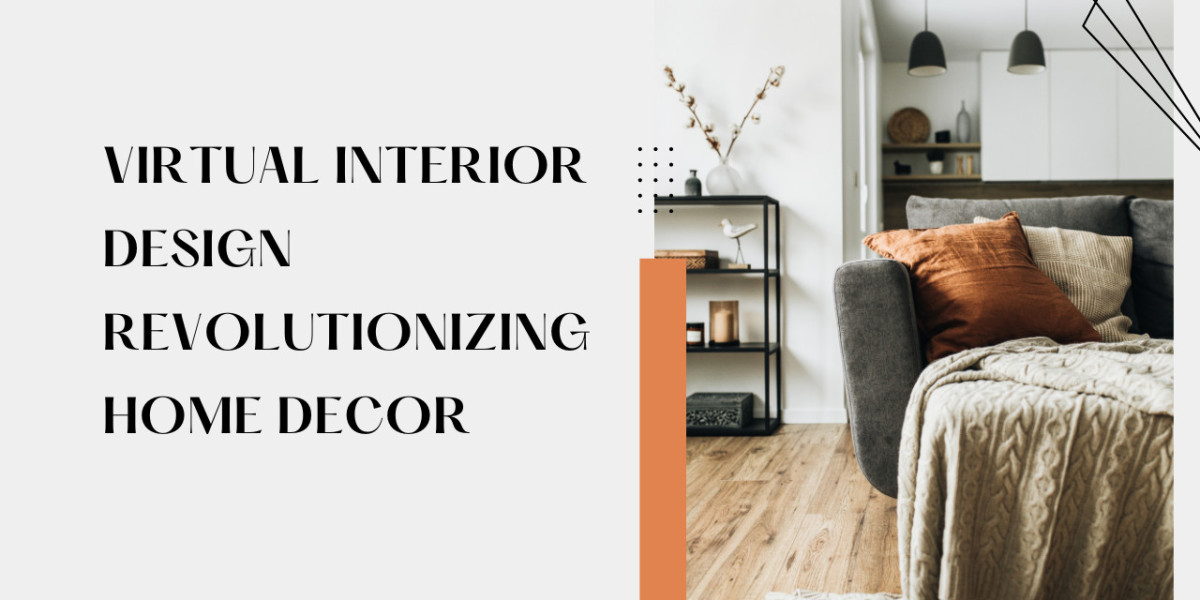In the age of digital transformation, the realm of interior design has evolved dramatically. Virtual interior design is a game-changer, offering clients the ability to visualize and plan their living spaces from the comfort of their homes. This blog will explore the concept of virtual interior design, its benefits, the tools and technologies involved, and how to choose the right virtual interior designer to transform your space.
What is Virtual Interior Design?
Virtual interior design is a service that allows clients to work with professional interior designers remotely, using digital tools and platforms to create, visualize, and implement design plans. This innovative approach leverages technology to provide a seamless design experience, making it accessible to a broader audience.
The Benefits of Virtual Interior Design
- Convenience and Flexibility: One of the most significant advantages of virtual interior design is the convenience it offers. Clients can collaborate with designers from anywhere in the world, at any time. This flexibility is especially beneficial for those with busy schedules or those living in remote areas.
- Cost-Effectiveness: Virtual interior design services are often more affordable than traditional in-person services. Without the need for travel or physical meetings, overhead costs are reduced, and these savings are typically passed on to the client.
- Access to a Global Talent Pool: Clients are no longer limited to local designers. With virtual interior design, you can choose from a vast array of talented designers worldwide, ensuring you find the perfect match for your style and needs.
- Visualization and Precision: Advanced design software allows clients to see realistic 3D renderings of their spaces before making any physical changes. This visualization helps in making informed decisions and reduces the risk of costly mistakes.
- Efficiency: Virtual interior design can streamline the design process. Communication is often more efficient through digital platforms, and the use of design software can speed up the planning and revision stages.
Tools and Technologies in Virtual Interior Design
The success of virtual interior design relies on a range of digital tools and technologies that facilitate the design process:
- 3D Rendering Software: Programs like SketchUp, AutoCAD, and Revit enable designers to create detailed 3D models of spaces. These renderings allow clients to visualize the design in a realistic manner, including furniture, lighting, and decor.
- Augmented Reality (AR) and Virtual Reality (VR): AR and VR technologies take visualization to the next level. Clients can experience immersive walk-throughs of their designed spaces, providing a deeper understanding of the final outcome.
- Online Design Platforms: Websites like Houzz, Modsy, and Havenly offer comprehensive virtual interior design services. These platforms connect clients with designers, provide design ideas, and offer tools for creating and managing design projects.
- Communication Tools: Effective communication is crucial in virtual interior design. Tools like Zoom, Skype, and project management software like Trello and Asana help facilitate seamless communication and collaboration between clients and designers.
- E-Design Packages: Many designers offer e-design packages that include everything from mood boards and color schemes to detailed floor plans and shopping lists. These packages can be customized to meet the specific needs and budget of the client.
Steps in a Virtual Interior Design Project
The process of virtual interior design typically follows these steps:
- Initial Consultation: The project begins with an initial consultation, often conducted via video call. During this session, the designer gets to know the client’s preferences, style, and functional needs. This is also the time to discuss budget and project scope.
- Space Measurement and Photos: Clients are usually asked to provide measurements and photos of the space to be designed. Some designers may provide tools or apps to help with accurate measurements.
- Concept Development: Based on the initial consultation, the designer creates a concept that includes mood boards, color palettes, and preliminary floor plans. This stage involves back-and-forth communication to refine the concept.
- 3D Renderings and Design Plan: Once the concept is approved, the designer creates detailed 3D renderings and a comprehensive design plan. This plan includes furniture layouts, decor selections, and lighting schemes.
- Implementation Guidance: The final design plan often comes with a shopping list and implementation instructions. Some virtual designers offer ongoing support to assist clients during the implementation phase.
Choosing the Right Virtual Interior Designer
Selecting the right virtual interior designer is crucial for a successful project. Here are some tips to help you make the best choice:
- Portfolio and Style: Review the designer’s portfolio to ensure their style aligns with your vision. Look for a diverse range of projects that demonstrate creativity and expertise.
- Client Reviews and Testimonials: Read reviews and testimonials from previous clients to gauge the designer’s reliability, professionalism, and ability to deliver on promises.
- Communication Skills: Effective communication is vital in a virtual setup. Choose a designer who is responsive, listens to your needs, and communicates clearly.
- Services and Packages: Compare the services and packages offered by different designers. Make sure the scope of work and pricing fit your budget and requirements.
- Technology Proficiency: Ensure the designer is proficient with the latest design software and tools. This expertise is crucial for creating accurate and realistic designs.
Conclusion
Grayscale Homes Virtual interior design is revolutionizing the way we approach home decor, making professional design services more accessible, efficient, and cost-effective. By leveraging advanced technologies and digital tools, virtual interior designers can create stunning, personalized spaces that reflect your style and meet your needs. Whether you’re looking to redesign a single room or transform your entire home, virtual interior design offers a convenient and innovative solution. By following the tips outlined in this blog, you can find the right designer to help you bring your vision to life, creating a beautiful and functional space you’ll love for years to come.



